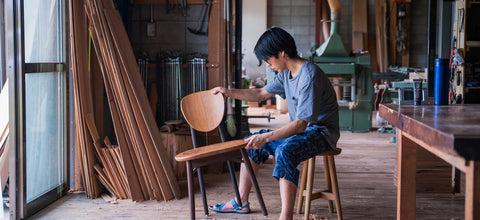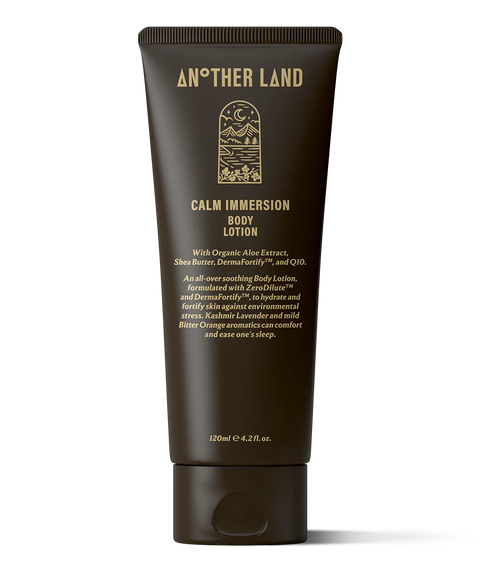PEOPLE
Otake Affinity’s with Nature
Woodworker Hiromi Otake’s creative life revolves around the forests of Yoshino
Photographed by Kiyoshi Nishioka
Hiromi Otake made the decision to move to the town of Shimoichi when he was 23, leaving the big city for the hills and mountains—and all that their forests, waterfalls, and streams offer.
As a woodworker, Otake creates vessels and lighting of his own design, and crafts chairs for Toshio Tokunaga, a Hyogo-based master he had apprenticed with. He had at first come to Shimoichi wanting to be close to the Yoshino forests which produce the timber that he uses for his craft.

“We mainly use local Yoshino cedar in my work, and there is a sawmill in the neighbourhood, which makes it easy and convenient to source good materials,” says Otake, who stays above his workshop where he now works on his own. “The area around the workshop is also surrounded by greenery and is a quiet place where I can concentrate on my work.”
The Yoshino forests of Nara are a legacy of Japan’s afforestation projects. In these carefully tended forests, cedar and cypress are cultivated in dense stands and over the years thinned again and again so the trees grow tall and straight. Each tree is cared for by a few generations of foresters for at least 200 years before it is harvested to give its beautiful timber of fine grain, even tones and minimal knots that Yoshino timber has come to be known for.


“To me, the forests of Yoshino embody the ideal relationship between human and nature,” says Otake.

This idea of working with nature, and making good of it, is not only an approach towards his work. It is very much a part of life here too. Otake enjoys day-to-day activities such as baking bread and making cheese—which are also ways we create with nature. And when the weather is right, especially in summer, he leaves behind the kanna and heads off to the hills with the rod to go stream climbing and fishing.
Otake has taken to tenkara, a method of fly fishing that uses only rod, line, and fly. Originating in Japan hundreds of years ago, the fuss-free tenkara style is suited for those who trek and fish in mountain streams. It has become a sport that tests the angler’s skills: with minimal gear, it is all about reading the water, selecting the right fly, and making a precise presentation. The fish Otake catches in these rivers is the amago, or the red-spotted masu salmon. If he camps overnight, he’ll make a fire and grill his catch for dinner. Otake says all these activities—making food, stream climbing, fishing, and camping—are his ways of self care. Of course they are skills too—skills that have been picked up, that have become pleasure and freedom.








